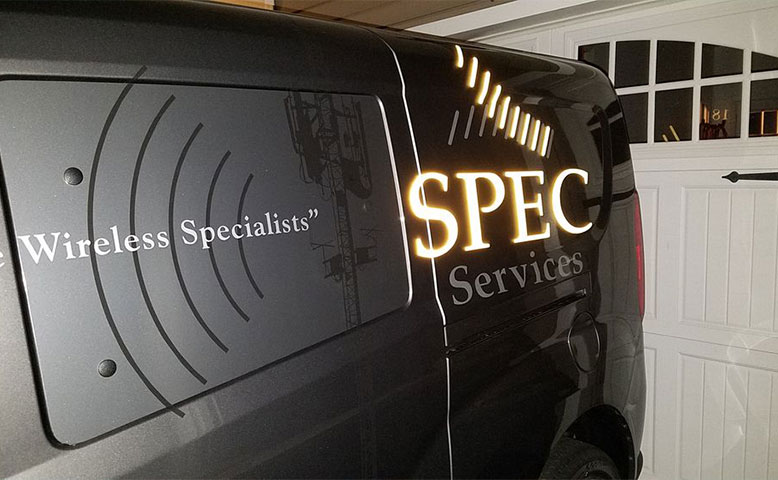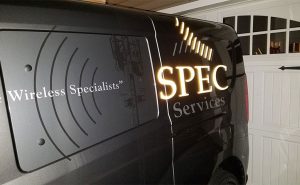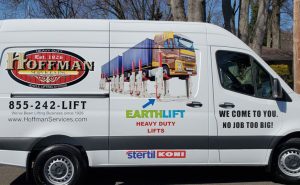Getting your trucks noticed is a smart way to get more calls without spending more on ads. Two common options are truck lettering and full or partial wraps. Both turn your vehicle into a moving sign. But they work in different ways, cost different amounts, and last for different time spans. This article explains each one in plain words. You’ll see how they look, what they cost, how long they last, and what care they need. We’ll also cover key technical points like vinyl grades, print methods, and installation basics. By the end, you’ll know which option fits your brand, budget, and schedule.
What Truck Lettering And Wraps Actually Are
Truck lettering uses cut vinyl letters, numbers, and logos placed right on the doors, sides, or rear. Think of your company name, phone, and USDOT number. The film is pre-colored, so there’s no printed picture—just solid colors cut to shape. It’s light, quick to install, and leaves plenty of paint showing.
A wrap covers more area. It can be a partial wrap (like just the rear and sides) or a full wrap (most painted panels). Wraps are printed on vinyl with your images, colors, and patterns. Installers apply the film with heat and squeegees, stretching it to follow curves and rivets. Good wraps include an overlaminate, which adds a clear shield on top. This protects the ink and reduces scuffs. Lettering gives clean information. Wraps give full artwork and strong visuals across large areas.
Common uses:
- Lettering: USDOT, MC numbers, company name, web, phone
- Wraps: large photos, gradients, patterns, full color branding
How Each Option Builds Strong Brand Recognition
Lettering keeps things simple and readable. From a distance, clear block letters with high contrast (for example, white letters on a dark truck) are easy to see. If your goal is quick info—“Plumbing, 24/7, 555-1234”—lettering shines. It looks clean and official, which works well for fleets or regulated work.
Wraps turn the truck into a rolling billboard. You can use big images, custom textures, and bold color fields. That helps people remember your brand after one glance. If you often sit in traffic or park curbside on busy streets, a wrap can work like a large static sign you never have to set up. The larger coverage also hides paint flaws and mismatched panels.
Think about your goals:
- Want fast, clear info at the lowest cost? Lettering.
- Want high-impact visuals and a branded “look”? Wraps.
- Want both? Use larger door lettering plus a partial wrap on side panels.
Upfront Cost, Lifespan, And Value Over Time
Prices vary by vehicle size, vinyl grade, and design time. As a simple guide, lettering usually costs far less than a full wrap. Partial wraps sit in the middle. But look at lifespan and area covered, too.
- Lettering: Often lasts 3–7 years, based on film grade and sun exposure. You pay less up front, and updates (new phone, new URL) are cheap.
- Partial wrap: Costs more than lettering, less than full wrap. Offers larger visuals where they matter—like the side panels—while keeping costs in check.
- Full wrap: Highest cost, strongest visual impact. Often lasts 5–7 years with premium materials and proper care.
Value grows when your trucks are on the road a lot or parked where many people pass. A wrap can deliver more views per day, which can make the higher price pay off. If your brand changes often, lettering can save money because updates are quick and low-cost.
Key Technical Details Buyers Should Understand First
Not all vinyl is the same. A few basic specs help you choose well:
- Vinyl type:
- Cast vinyl conforms better to curves and lasts longer. Good for full wraps and complex shapes.
- Calendered vinyl is thicker and cheaper. Fine for flat areas and simple lettering.
- Thickness: Most wrap films are around 2–3 mil (thousandths of an inch) plus a 1–2 mil laminate. Thinner cast films conform best.
- Adhesive: Removable adhesives allow clean removal within the rated life. Permanent adhesives grip harder but can be tougher to remove later.
- Lamination: A clear overlaminate shield protects from UV, road grime, and light scratches. It also makes washing easier.
- Print methods: Common inks include latex, eco-solvent, and UV. Each has different cure times and durability. Ask for outdoor-rated inks with a matching laminate.
- Color accuracy: If you have a specific brand color, ask for Pantone or color-matched proofs. What you see on a screen can differ from printed film.
- Reflective film: Reflective vinyl improves night visibility. Many fleets use reflective accents or numbers.
- Install temperature: Most films install best around 60–80°F (16–27°C). Too cold or too hot can affect adhesion and stretching.
- Surface prep: Trucks must be clean, dry, and free of wax or silicone. Residue can cause lifting or bubbles later.
Knowing these basics helps you ask the right questions and pick materials that fit your needs.
Daily Care Tips To Keep Graphics Sharp
Good care protects your investment. Whether you choose lettering or a wrap, simple habits go a long way:
- Wash by hand with mild soap and a soft sponge. High-pressure wands can force water under the edges if you spray too close.
- Avoid harsh cleaners, strong solvents, and rough brushes. They can dull the laminate or lift edges.
- Rinse often in winter or near the coast. Road salt and sea spray can shorten life if left on the film.
- Fix edge lifts early. If you see a corner lifting, dry the area and press it down, then schedule a quick repair before dirt gets in.
- Park in shade when you can. UV light is the main cause of fading over time.
- Waxing? Use only products approved for wraps. Many standard waxes contain chemicals that can haze the film.
Set a simple schedule: a gentle wash every one to two weeks, faster cleanups after storms, and a quick visual check for damage.
When You Need Flexibility Or Frequent Updates
Some companies update info a lot—seasonal offers, service areas, or a new QR code. If you change details often, lettering is easier to swap. You can replace just one line without touching the rest. Keep your core details (company name, phone) in separate lines so edits are fast.
Wraps can still adapt. A smart approach is a modular design: print the main wrap as long-term branding, then use small printed panels for promos or QR codes. Those small panels are cheap to replace. If you plan rebrands every two to three years, a partial wrap is a safe middle ground—big look, lower cost to redo than a full wrap.
Flexible setup ideas:
- Door lettering for fixed info, small panel for seasonal message
- Partial wrap base art, changeable rear-door promo panel
- Simple URL and QR code in areas that are easy to replace
Weather, Wear, And Local Rules To Consider
The weather affects both choices. Hot sun speeds up fading on printed wraps and colored vinyl alike. Snow and salt can attack edges. Gravel roads mean more chips on front edges and rockers. Add edge-sealing in high-wear spots, or choose thicker protective films there.
Rules matter, too. Many trucks need USDOT numbers with a minimum height (often 2 inches), placed on both sides, in a color that contrasts with the truck body. Some cities have sign rules about reflective materials or vehicle ads in certain zones. Check your local rules or ask your installer to confirm placement, size, and contrast so you stay compliant and easy to read.
Durability checks:
- Ask for the film brand, series number, and warranty years
- Confirm laminate type (gloss, satin, or matte)
- Request edge sealing for high-stress curves and wheel wells
Quick Decision Guide For Common Business Cases
Use this fast guide to match your case to the right option:
- Small service firm, clear info needed:
Choose lettering with bold, high-contrast colors. Add reflective door numbers for night work. Keep lines separate for easy updates. - Growing brand, moderate budget, big impact:
Go for a partial wrap on the sides and rear. Add door lettering for USDOT and contact info. Use a modular panel for offers. - Marketing-heavy team, high road time:
Pick a full wrap with strong visuals. Use premium cast vinyl with laminate for curves and longer life. Keep key info large and simple. - Frequent promos or phone number changes:
Use lettering for core info plus small swap panels on the rear. Or design the wrap with a replaceable area for promos.
Before you decide, ask:
- How long will we keep this truck?
- Do we need large photos or just text?
- How often do we update contact info or offers?
- What’s our monthly budget for mobile ads?
Conclusion: Choose What Fits Your Brand Today
Truck lettering and wraps both work well when used for the right goal. Lettering gives clear info at a low cost and is easy to update. Wraps give big visuals that people remember and can pay off fast if your trucks get lots of views. Match your choice to your brand needs, budget, and how long you’ll keep the vehicle. If you want clean, durable lettering done right, consider Unique Sign and Auto Design. Our team can size, place, and install your truck lettering so it reads well, meets rules, and helps more customers call you.



